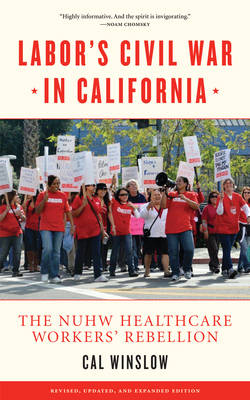
- Afhalen na 1 uur in een winkel met voorraad
- Gratis thuislevering in België vanaf € 30
- Ruim aanbod met 7 miljoen producten
- Afhalen na 1 uur in een winkel met voorraad
- Gratis thuislevering in België vanaf € 30
- Ruim aanbod met 7 miljoen producten
Labor's Civil War in California
The NUHW Healthcare Workers' Rebellion
Cal WinslowOmschrijving
This book examines one of the most important labor conflicts in the United States today. In 2006 and 2007, disputes developed concerning the practice and direction of the 150,000 member healthcare workers union in California, United Healthcare Workers-West (UHW), with its "parent" organization, the Service Employees International Union (SEIU).
SEIU is the second largest union in the US, the fastest growing in recent years. It is a well-organized, well-financed organization, with an ambitious agenda. SEIU perspectives, while packaged as progressive, reject traditional union traditions and practices - union democracy and the idea of "class struggle" are replaced with class collaboration, and the union frequently "wheels and deals" directly with top management and politicians. In 2007 UHW rejected these perspectives and contested them within the union.
The SEIU international leadership retaliated by placing UHW in trusteeship, firing its officers, seizing its assets, and taking control of all union's activities. UHW leaders and members responded by forming a new union, the National Union of Healthcare Workers (NUHW) and challenging the SEIU in virtually every unionized site in the state.
This California conflict--SEIU vs. NUHW--is no local brawl; it is not about personalities, it is not about West Coast eccentricities. Its significance is not confined to the fortunes of just one particular union. SEIU's attack, however regrettable, is not the first such--nor will it be the last. The truth is that labor has always been divided, comprised of many currents. The truth is also that there are rights and wrongs in labor, as elsewhere, and that these can expose fundamental divides--in this case two contesting souls in the workers' movement. These are sharply on display today in this dispute--the one soul authoritarian, top-down, collaborationist, the other bottom-up, rank-and-file, class conscious.
Specificaties
Betrokkenen
- Auteur(s):
- Uitgeverij:
Inhoud
- Aantal bladzijden:
- 128
- Taal:
- Engels
Eigenschappen
- Productcode (EAN):
- 9781604863277
- Verschijningsdatum:
- 1/04/2010
- Uitvoering:
- Paperback
- Formaat:
- Trade paperback (VS)
- Afmetingen:
- 124 mm x 201 mm
- Gewicht:
- 181 g

Alleen bij Standaard Boekhandel
Beoordelingen
We publiceren alleen reviews die voldoen aan de voorwaarden voor reviews. Bekijk onze voorwaarden voor reviews.











